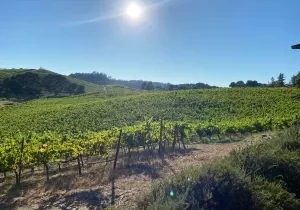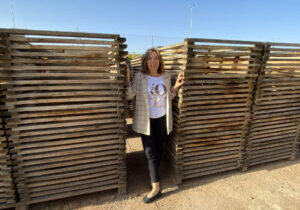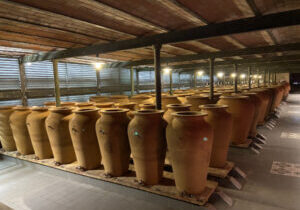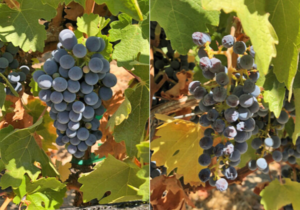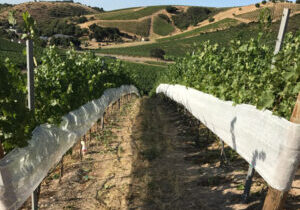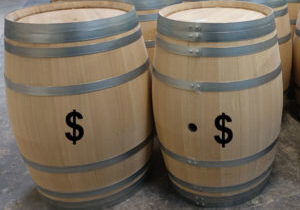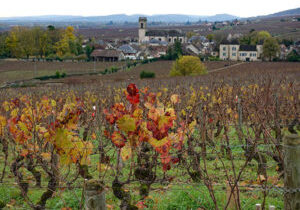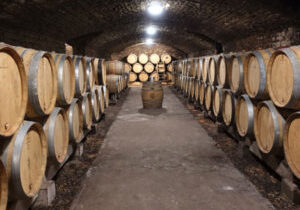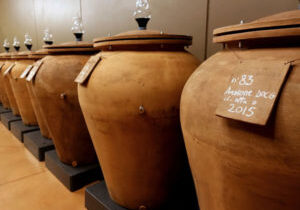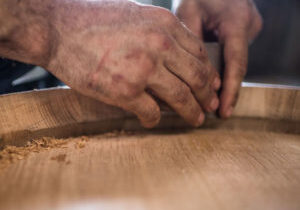"Seasoning," also known as air-drying, is the process of leaving raw stave wood outside for a period of time before it's used to make barrels. Through exposure to different climatic conditions (rain vs. sun, in particular), the composition of the wood changes to reveal more desirable flavors.
Barrel wood can be seasoned anywhere from 18 months up to 60 months. The longer seasoned wood is always more expensive, but depending on a winemaker's goals for a particular wine, he/she might prefer a shorter seasoning time.
Preferences Vary Based on Goals of the Winemaker
Jeff Cohn of Jeff Cohn Cellars doesn’t like to use oak that's been seasoned for more than two years. He doesn’t feel he’s getting as much out of the barrels over the long term. So does a longer seasoned barrel stop giving sooner?
I guess it depends on what qualities of the barrel are most important to you. For example, if you want a lot of oak tannin, a three-year seasoned barrel might be too subtle. Seasoning softens the tannins. But even if you like the barrel the first year you fill it, you'll probably find by the second year, the tannins aren't enough.
Jim Schultze of Windy Oaks tells me he only uses barrels that are seasoned for three years or longer. In his past trials, he’s found three-, four- and (the rare) five-year seasoned barrels to be more integrated with the wine and have smoother tannins than the two-year barrels. He's also noticed a bigger difference between the two- and three-year barrels than between the three- and four-year barrels (and even less between the four and five).
While Jim might be getting less of a return on his investment with the four- and five-year barrels, he likes the results and remains happy with the barrels on the second and third uses.
Relationship Between Seasoning and Toasting
Another important variable is the relationship between seasoning and toasting. According to barrel broker Mel Knox, “The impact of toasting is important in the first twelve months of the barrel’s use. After that, the importance of toasting diminishes while seasoning remains key.” He also says the longer a barrel is seasoned, the less obvious the toast.
So if you’re looking for a good dose of toastiness, perhaps you’d prefer a two-year seasoned barrel. Or if you go for the three-year, you might want to choose a heavier toast. But regardless of length of seasoning, you can expect to lose a lot of those toasty aromas and flavors after the first year.
Other Variables
Something else to consider when it comes to seasoning is the ecosystem of the stave lot. There are micro-organisms that live on the staves which greatly diversify with longer seasoning and alter the structure and composition of the wood.
The results are going to vary from cooper to cooper as different micro-organisms occupy different regions and stave lots. So it's possible you might like a longer seasoned barrel from one cooperage but not from another.
Grape variety is a factor as well. Jim finds that a two-year seasoned barrel on his Pinot Noir distracts from the true flavors of the wine, and he likes the subtlety of the longer air dried wood.
Jeff, who makes Syrah, finds the two-year barrel to be an enhancement, not a distraction. His wines have plenty of tannins already, but he wants more because they help stabilize color and compensate for tannins that drop out after fermentation. His wines are very full bodied and can stand up to as much oak as he throws at them (up to 100% new oak on some wines).
Conclusion
So in deciding if it’s worth it to spend more money on longer seasoned wood, consider your winemaking goals (for a particular lot as well as the final blend) and the grape variety. The most expensive barrel isn’t always going to be best option for your wine.
